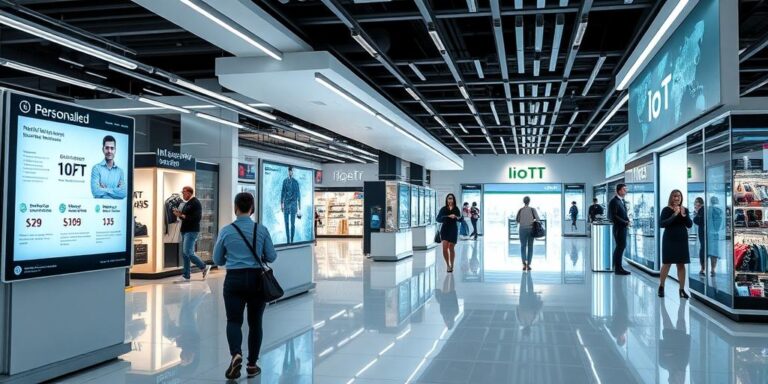The Future of Retail IoT: Personalized Shopping and Smart Stores (2025)
The retail landscape is undergoing a dramatic transformation, driven by the Internet of Things (IoT). By 2025, expect personalized shopping experiences and smart stores to be the norm, not the exception. This article explores the key trends shaping the future of retail IoT and its impact on consumers and businesses.
What is Retail IoT?
Retail IoT refers to the use of interconnected devices and sensors to collect and analyze data within a retail environment. This data is then used to optimize operations, enhance customer experiences, and drive sales. From smart shelves to personalized recommendations, IoT is revolutionizing how retailers interact with their customers and manage their businesses.
Key Trends in Retail IoT (2025):
- Personalized Shopping Experiences: IoT enables retailers to gather granular data on customer preferences, behaviors, and purchase history. This data is used to create personalized recommendations, targeted promotions, and customized shopping experiences. Imagine walking into a store and receiving real-time offers on your favorite products based on your past purchases.
- Smart Shelves and Inventory Management: Smart shelves equipped with RFID tags and sensors automatically track inventory levels, alerting retailers when products are running low or need to be restocked. This minimizes stockouts, reduces waste, and improves overall efficiency. Expect to see more robotic solutions autonomously managing inventory on store floors.
- Enhanced Customer Engagement: Interactive kiosks, digital signage, and mobile apps provide customers with real-time information, product demos, and personalized assistance. This increases customer engagement, improves satisfaction, and drives sales. Augmented reality (AR) and virtual reality (VR) will further blur the line between the physical and digital shopping experiences.
- Optimized Store Operations: IoT devices monitor energy consumption, temperature, and other environmental factors, allowing retailers to optimize store operations and reduce costs. Predictive maintenance sensors on equipment can identify potential issues before they lead to costly downtime.
- Seamless Checkout Experiences: Mobile payment systems, self-checkout kiosks, and automated checkout technologies streamline the checkout process, reducing wait times and improving customer satisfaction. Biometric authentication and AI-powered fraud detection will make transactions more secure and efficient.
Benefits of Retail IoT:
- Increased Sales and Revenue: Personalized recommendations and targeted promotions drive sales and increase revenue.
- Improved Customer Satisfaction: Personalized shopping experiences and seamless checkout processes improve customer satisfaction.
- Reduced Costs: Optimized store operations and efficient inventory management reduce costs.
- Enhanced Efficiency: Automated processes and real-time data analytics enhance efficiency.
- Data-Driven Insights: IoT provides retailers with valuable data-driven insights into customer behavior and market trends.
Challenges of Retail IoT:
- Data Privacy and Security: Protecting customer data and ensuring the security of IoT devices is crucial.
- Integration Complexity: Integrating IoT devices and systems with existing infrastructure can be complex and challenging.
- Cost of Implementation: Implementing IoT solutions can be expensive, requiring significant investment in hardware, software, and infrastructure.
- Scalability: Scaling IoT solutions to accommodate growing data volumes and increasing numbers of devices can be challenging.
- Lack of Standardization: The lack of standardization in IoT technologies can create interoperability issues.
Conclusion:
The future of retail is undoubtedly connected. As IoT technologies continue to evolve, expect to see even more innovative applications emerge, transforming the way retailers operate and interact with their customers. By embracing IoT, retailers can create personalized shopping experiences, optimize operations, and drive growth in an increasingly competitive market. However, it is essential to address the challenges of data privacy, security, and integration to fully realize the potential of retail IoT.




